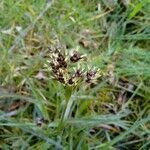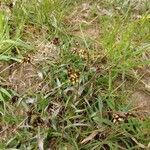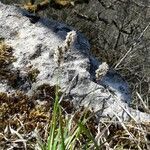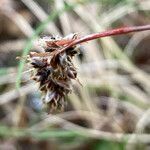Culms densely cespitose, reddish, 3--33 cm, base thick, extending 1--8 cm into soil. Leaves: sheath throats densely hairy; basal leaves erect, channeled, linear, 2--15 cm x 1--4 mm, apex not callous; cauline leaves 2--3. Inflorescences panicles of dense, nodding, spikelike clusters (each 1--25 mm), often interrupted by 10--70 mm; proximal inflorescence bract conspicuous, generally exceeding inflorescence; bracts clear; bracteoles clear, margins ciliate, apex narrow, extended. Flowers: tepals brown with clear margins or very pale throughout (outer whorl bristle-pointed), 2--2.5 mm; outer whorl longer than inner whorl; anthers ± equaling filaments. Capsules pale to dark brown or blackish, round (apex ± acute), generally shorter than tepals, apex ± acute. Seeds brown, cylindric-ovoid, body 1--1.2 mm; caruncle 0.2 mm. 2n = 24.
Densely cespitose, 1–3 dm; basal lvs numerous; cauline lvs 2 or 3, narrowly linear; fls in small, dense, sessile glomerules, forming a nodding spike 1–3 cm; bracts subtending the fls acuminate, red-brown below, scarious above, often ciliate; tep 2–2.5 mm, terminating in a slender fragile bristle; fr purple-brown, about equaling the tep; seeds ellipsoid, 1–1.2 mm, with a narrow raphe and a very short, rounded, basal appendage; 2n=12, 14, 18, 24. Arctic and alpine meadows, ledges, and slopes; circumboreal, s. to the high mts. of N.Y. and N. Engl.




